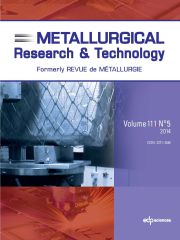No CrossRef data available.
Article contents
Structural hardening mechanisms of lead-cadmium-calcium alloys for battery grids
Published online by Cambridge University Press: 25 October 2002
Abstract
It is known that age-hardening in lead-calcium alloys proceeds in two stages. The first corresponds to two concomitant hardening transformations of discontinuous type and without precipitation. The second, is a lamellar reaction of precipitation of Pb3Ca. The ageing of lead-cadmium alloys is characterized by a continuous precipitation and a discontinuous transformation. The hardening process is followed by an overaging which consists of a discontinuous transformation with a reprecipitation of the Cd from the fine hardening precipitates of the same phases. With an aim of improving the mechanical and electrochemical properties of Pb-Ca alloys, we undertook a study of the influence of minor additions of cadmium on the age-hardening of these alloys. Two structural states were considered: as-cast condition, rehomogenized condition.
- Type
- Research Article
- Information
- Metallurgical Research & Technology , Volume 99 , Issue 5: Science et Génie des MatériauxFatigue et environnement , May 2002 , pp. 481 - 489
- Copyright
- © La Revue de Métallurgie, 2002


